English 1 Module: Reflection on a Story Reading Experience
VerifiedAdded on 2023/06/03
|6
|1060
|259
Homework Assignment
AI Summary
This assignment is a reflection on a story reading experience, focusing on the book "Squids Will Be Squids" by Jon Scieszka, read to a group of seven to eight-year-old children. The reflection details the classroom setup, including the arrangement of chairs and the distribution of the storybook to facilitate student engagement. It discusses the teacher's approach, including the use of questions and appropriate inflection to maintain student interest and encourage participation. The paper contrasts the reading experience with how it might be conducted with preschoolers and highlights the importance of creating a participatory environment. The reflection also explores the three basic skills needed for reading, the role of picture storybooks in improving reading comprehension, and effective methods for vocabulary development through interactive reading. It concludes by discussing strategies to support emergent writing, such as using word charts and encouraging students to write short sentences about the characters, emphasizing the importance of an engaging and emotionally rich story to promote reader engagement.
1 out of 6
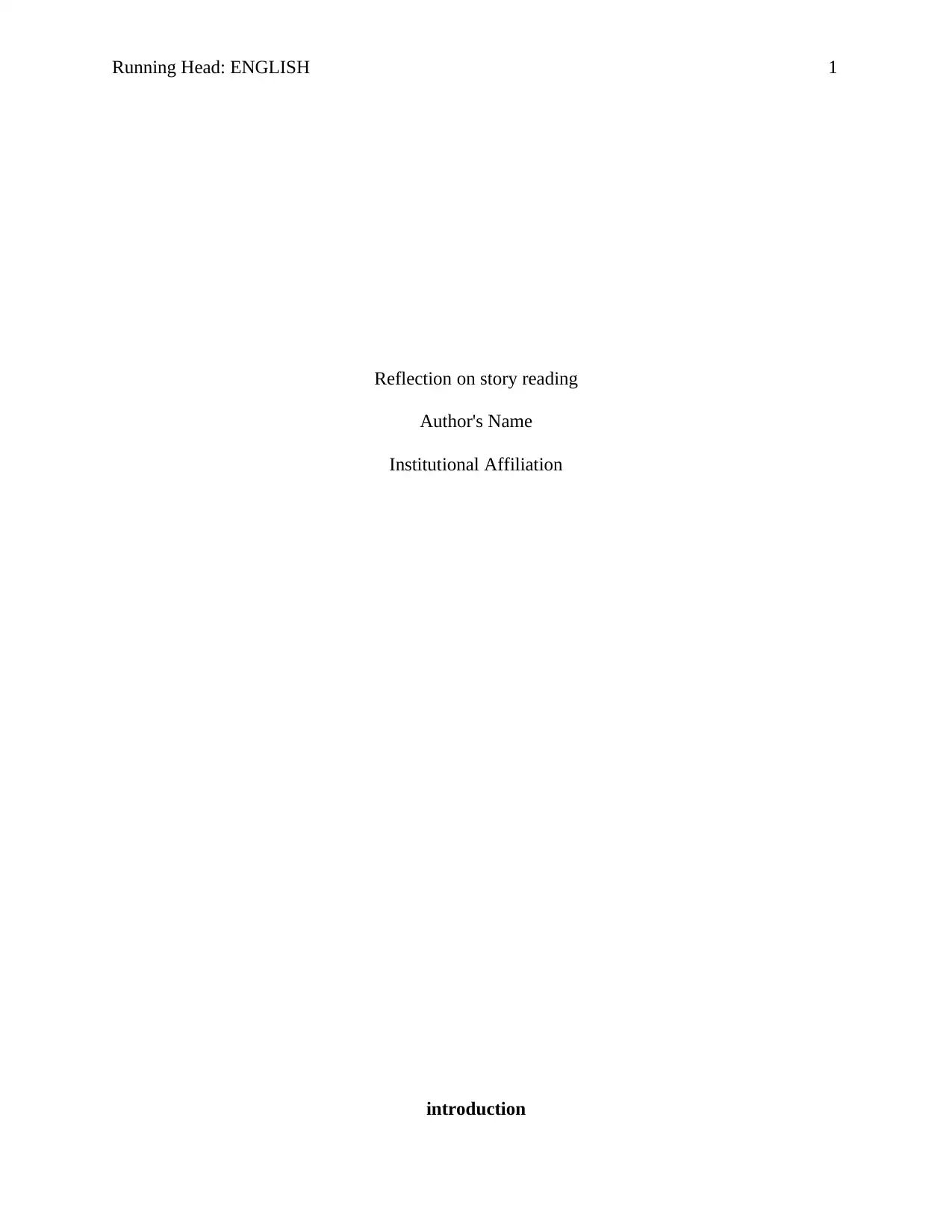
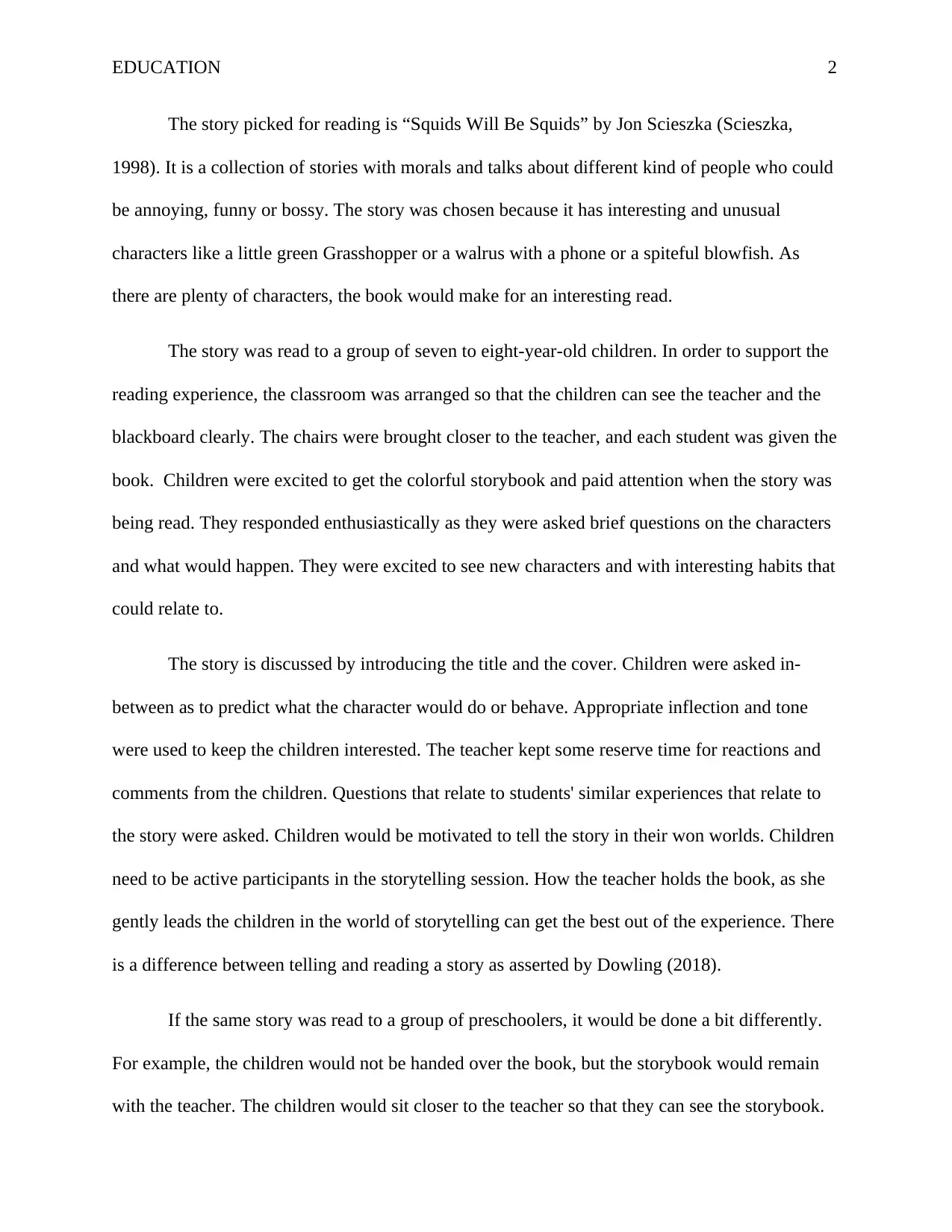
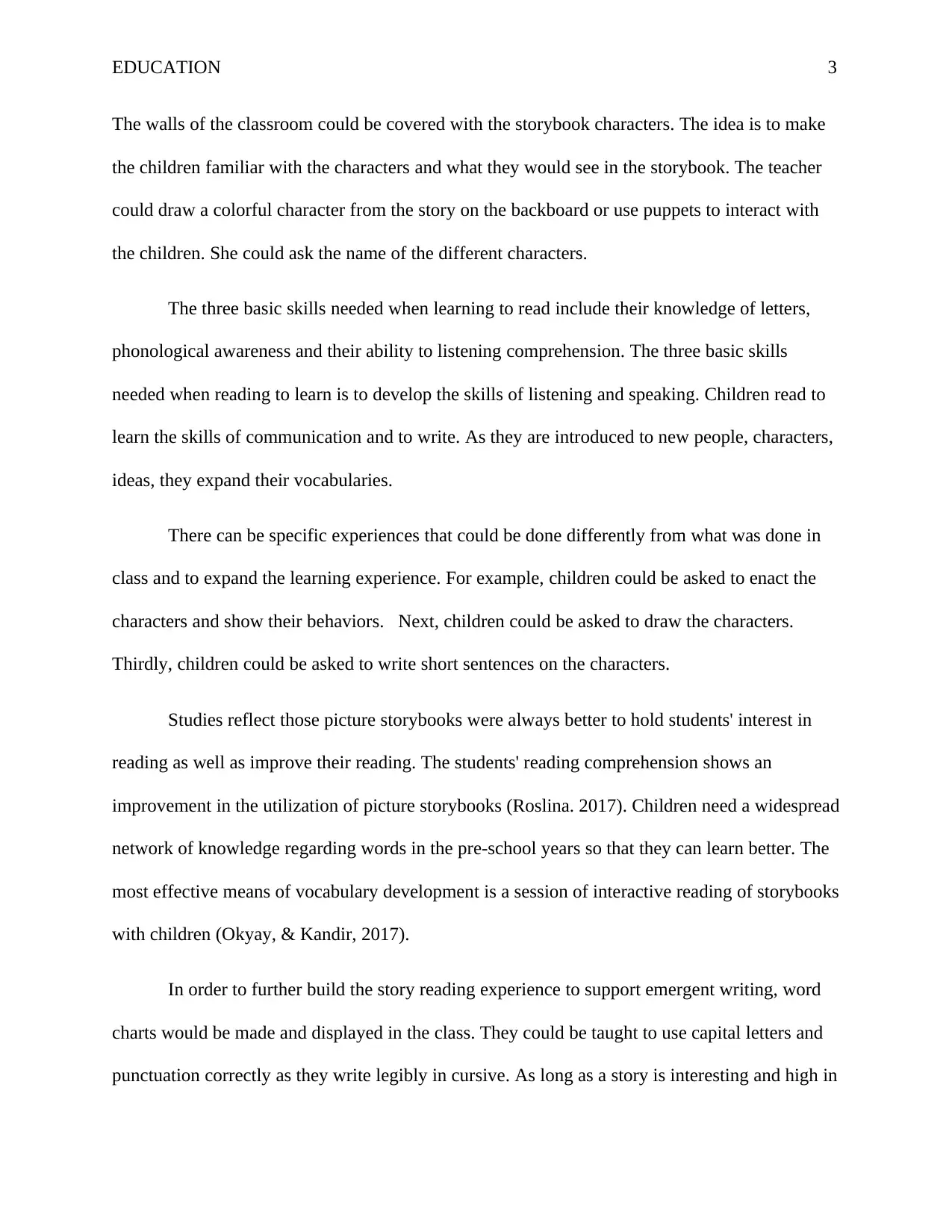

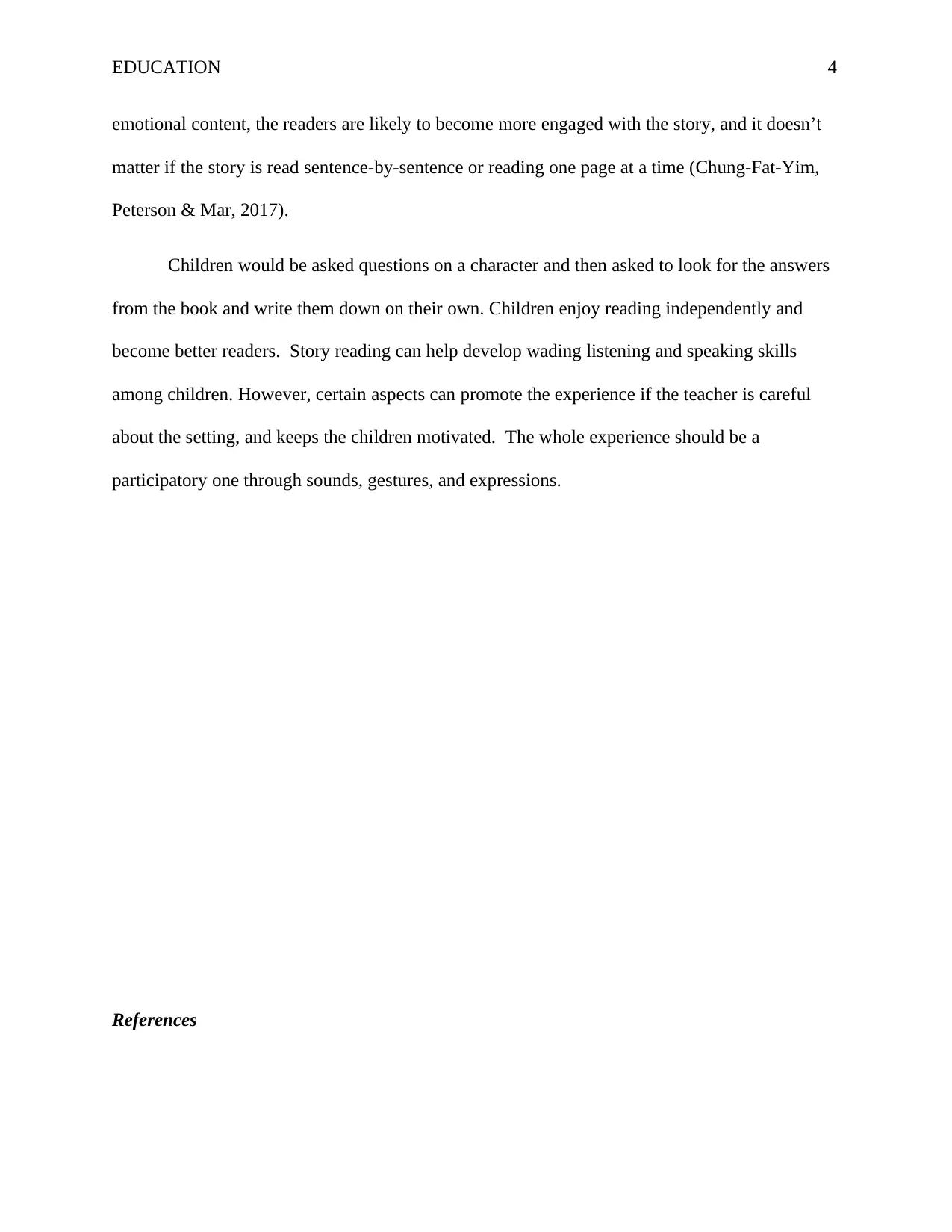
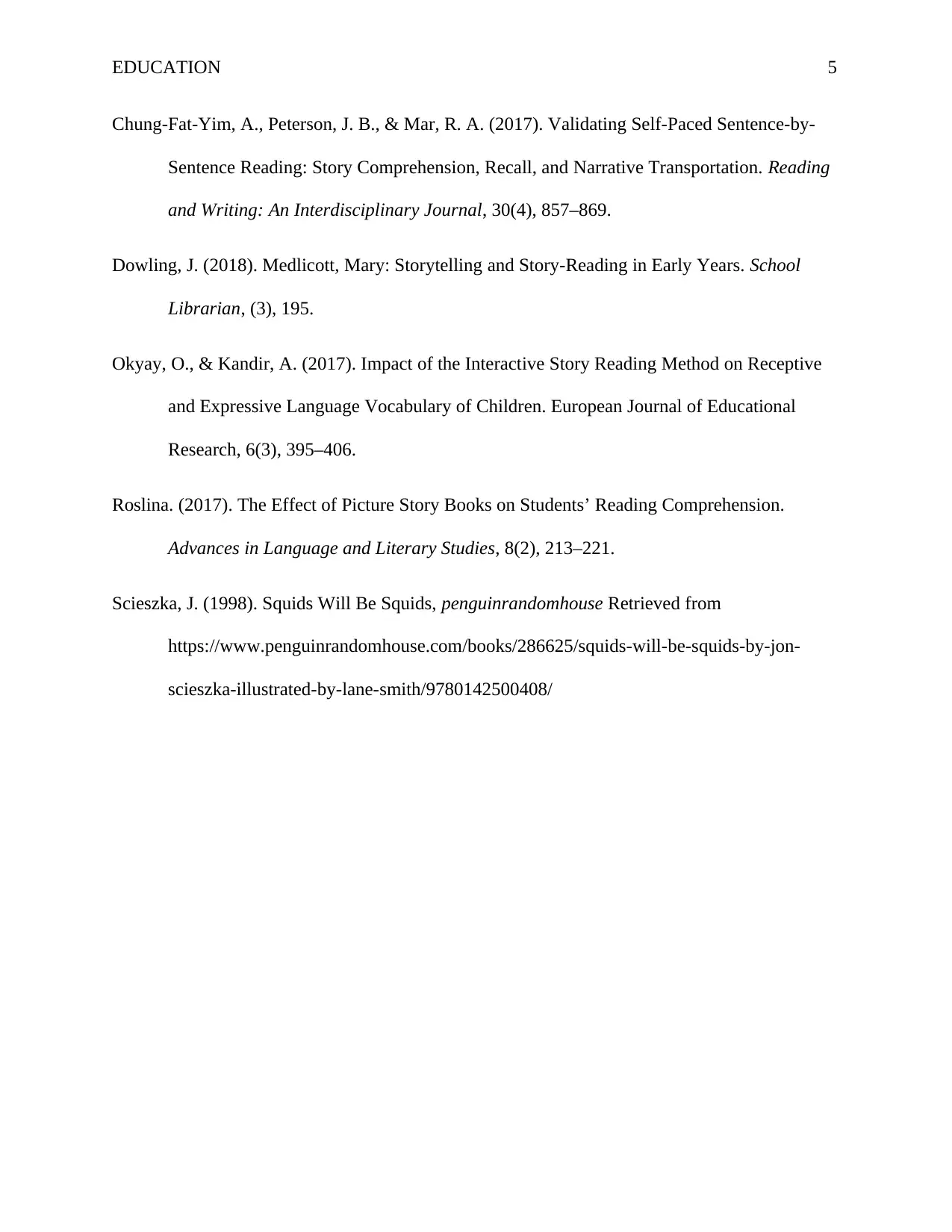







![[object Object]](/_next/static/media/star-bottom.7253800d.svg)